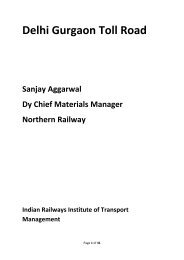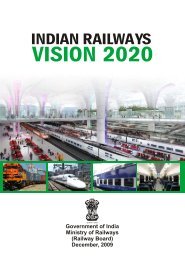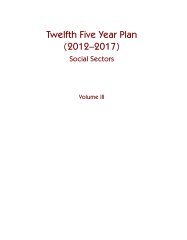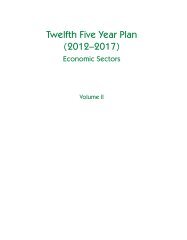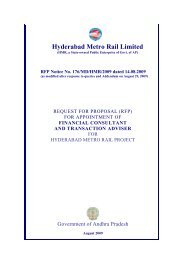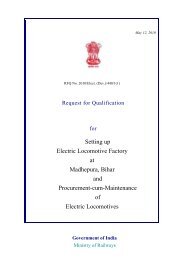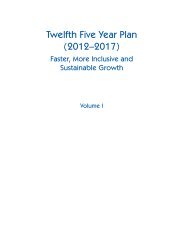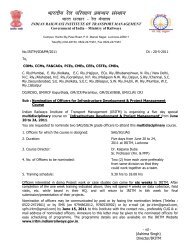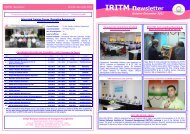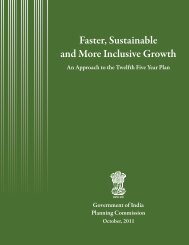Approach 12 FYP - Indian Railways Institute of Transport Management
Approach 12 FYP - Indian Railways Institute of Transport Management
Approach 12 FYP - Indian Railways Institute of Transport Management
You also want an ePaper? Increase the reach of your titles
YUMPU automatically turns print PDFs into web optimized ePapers that Google loves.
58 <strong>Approach</strong> to the Twelfth Five Year Plan<br />
(iv)<br />
(v)<br />
Buildings: While efficient appliances can reduce demand for power to some extent, change in the<br />
design and structure <strong>of</strong> building itself can act as a multiplier in reducing overall energy demand.<br />
India is fortunate that most <strong>of</strong> our commercial buildings that will be extant in 2030 are yet to be<br />
built. We need to both evolve and institutionalize Green Building Codes at all levels <strong>of</strong> Government:<br />
Centre, State and Urban Local Bodies.<br />
Forestry: Up to the Eleventh Plan, our focus was on increasing area under forest and tree cover.<br />
Given the scarce land availability and the trade-<strong>of</strong>fs involved, achievement in this front has been<br />
limited. However, there is a tremendous scope for increasing the stock and quality <strong>of</strong> existing<br />
forests. ‘Green India Mission’ is being designed to regenerate at least 4 million hectares <strong>of</strong><br />
degraded forest; increase density <strong>of</strong> cover on 2 million hectares <strong>of</strong> moderately dense forest; and<br />
overall, increase the density <strong>of</strong> forest and tree cover on 10 million hectares <strong>of</strong> forest lands, waste<br />
lands and community lands.<br />
5.60 The Expert Group’s Final Report is likely to contain greater details <strong>of</strong> technology, policy and finance<br />
options that are necessary to pursue a low emission, inclusive growth trajectory in the future. Some <strong>of</strong><br />
these will be built into the growth strategy for the Twelfth Five Year Plan.<br />
5.61 Finally, there is the broader issue <strong>of</strong> adapting agricultural practices to serious alterations in climatic<br />
conditions, and to managing our water resources in a more comprehensive and an efficient fashion. There<br />
is an urgent need for developing agro-climatic zone specific water harvesting and management technology<br />
to enable rural communities to withstand the effects <strong>of</strong> climate change. Similarly, genetic improvement<br />
<strong>of</strong> agricultural crops to develop a flexible portfolio <strong>of</strong> plant varieties that can thrive in drier or wetter<br />
environments, survive flash floods, and resist pest attacks due to change in humidity, etc. is an important<br />
area <strong>of</strong> research that needs to be pursued in the Twelfth Plan.<br />
5.62 In brief, all levels <strong>of</strong> Government need to act together to combat the challenge <strong>of</strong> Climate Change.<br />
The State Governments need to develop a State Action Plan for Climate Change that can be dovetailed to<br />
the National Action Plan for Climate Change, by identifying vulnerable areas and communities, and by<br />
developing a State specific action programme for the above mentioned areas that will facilitate mitigation<br />
and adaptation action against the challenge <strong>of</strong> climate change. Some State have already made a beginning;<br />
other States need to take similar action during the Twelfth Plan period.




